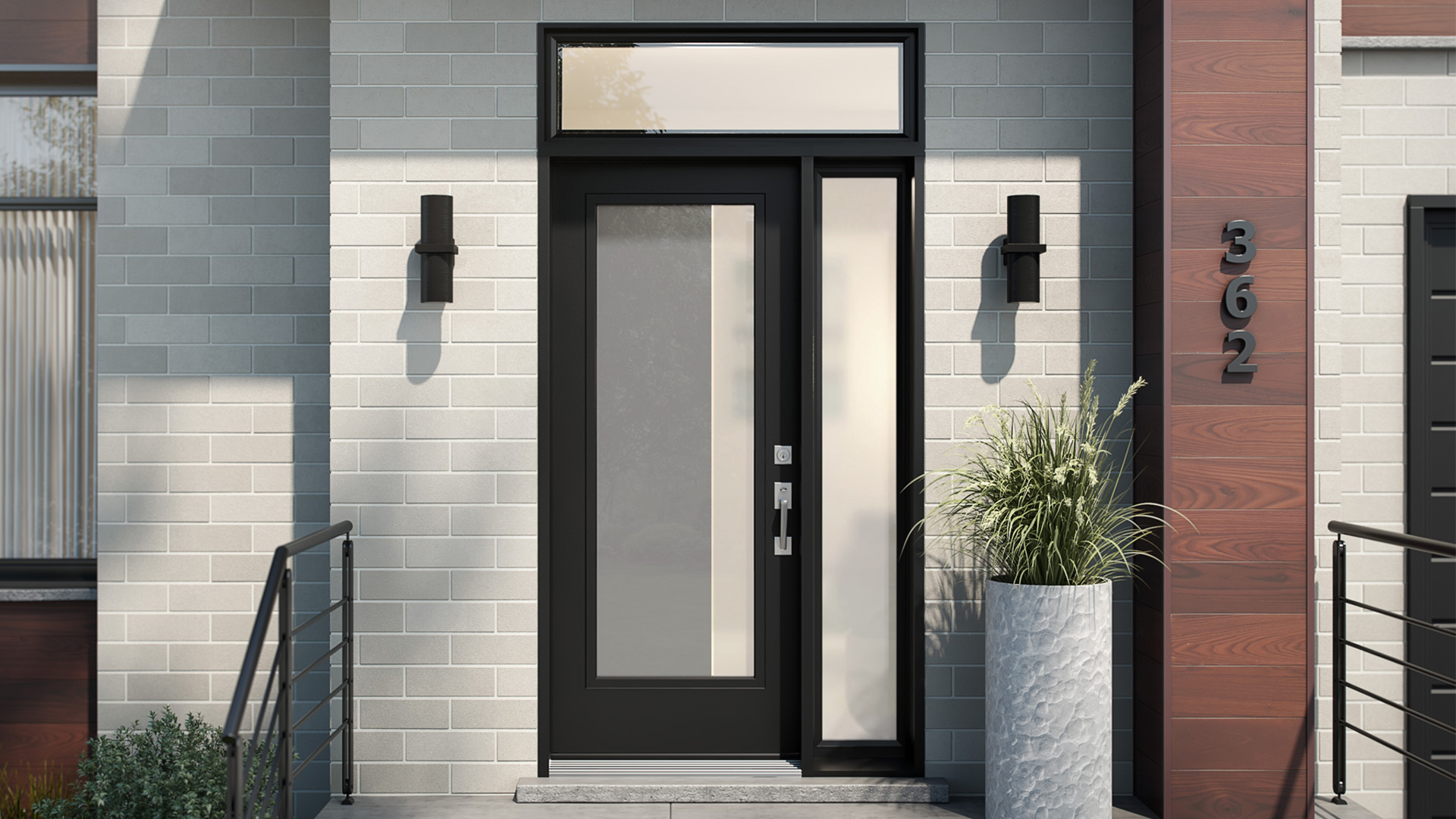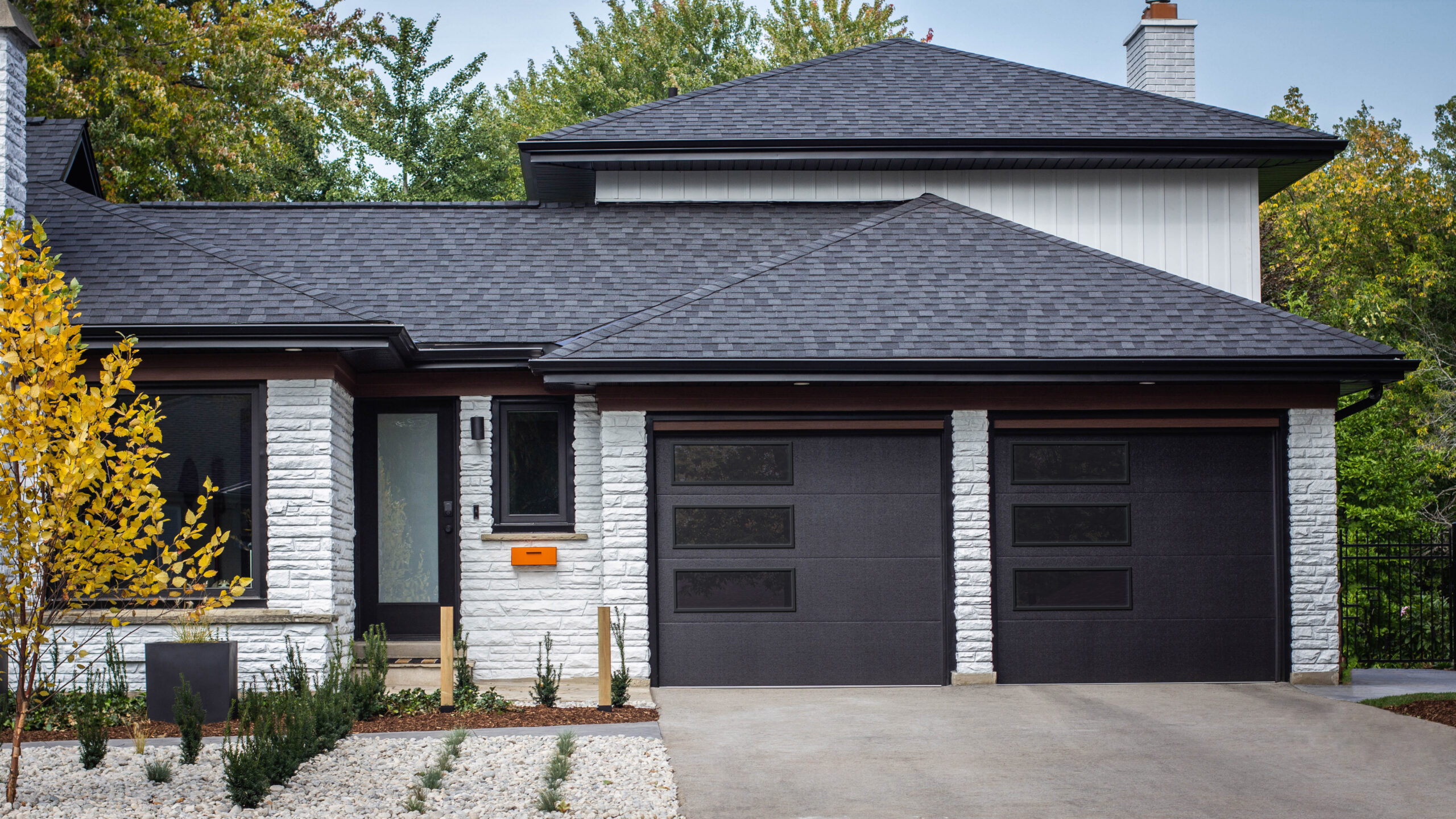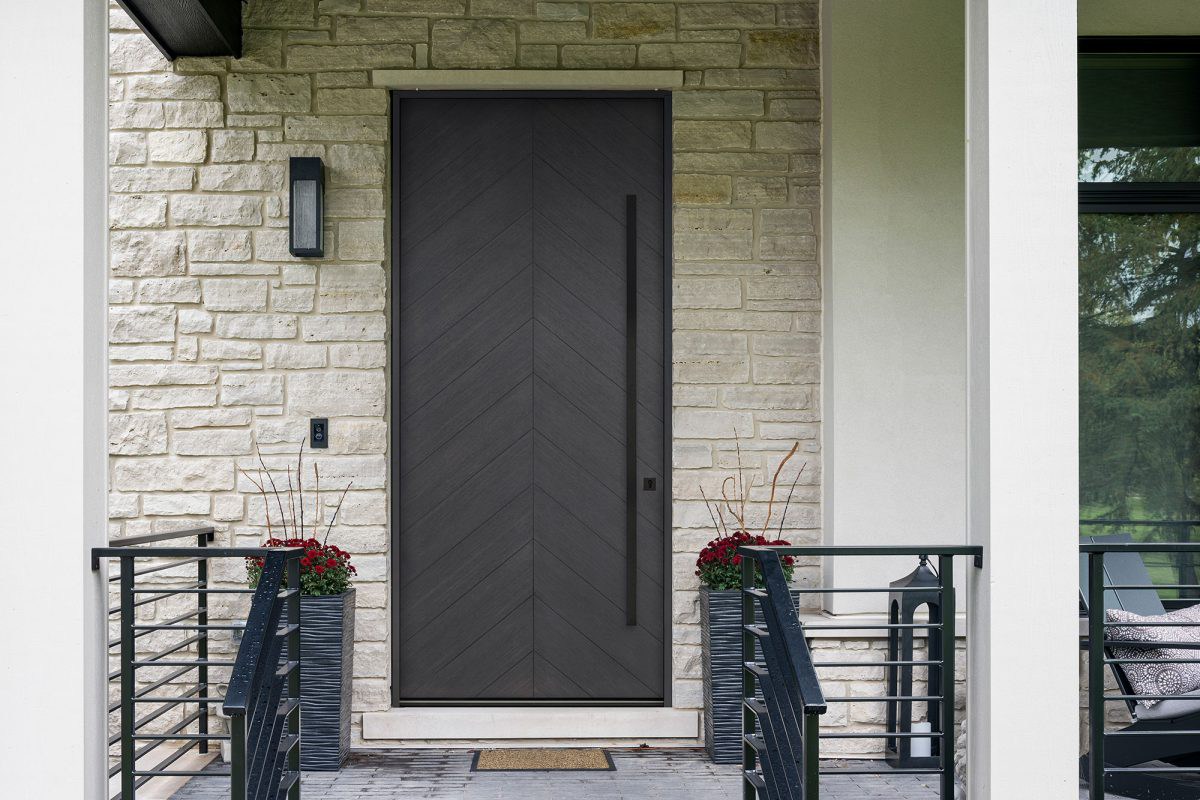What is exterior door and interior door?

Introduction to Exterior Door and Interior Door
When it comes to choosing doors for your home, understanding the difference between an exterior door and an interior door is essential. Both types of doors serve unique purposes and are designed with specific features to meet the needs of different areas in your home. Whether you’re replacing an old door or planning a new home, knowing the correct type of door to use can help you enhance your home’s functionality, security, and style.
What Is an Exterior Door?
An exterior door is the main entrance that leads to the outside of your home. It’s the door that everyone sees first, and it plays a significant role in your home’s curb appeal, security, and energy efficiency. The exterior door must be durable enough to withstand harsh weather conditions like rain, wind, and snow. It’s also the first line of defense when it comes to home security.
Typically, exterior doors are made from stronger materials compared to interior doors. Common materials include stainless steel, cast aluminum, and solid wood, all of which are known for their strength and insulation properties. Cast aluminum doors, for example, are popular for their durability and resistance to corrosion, while stainless steel doors are favored for their security benefits.
Another essential feature of an exterior door is the lock system. Since it’s exposed to the outside, it requires high-quality locks and security features to keep your home safe. Deadbolts, smart locks, and reinforced frames are often found on exterior doors to provide added protection.
Additionally, exterior doors are designed with insulation in mind. A well-insulated exterior door will help keep your home comfortable by preventing drafts and maintaining the internal temperature. This helps with energy efficiency, saving you money on heating and cooling costs. Many exterior doors also come with weatherstripping to seal the gaps and enhance insulation.
What Is an Interior Door?
An interior door, on the other hand, is used within the home to separate rooms and create private spaces. Because these doors don’t face the outside elements, they don’t require the same level of durability and weather resistance as exterior doors. Interior doors are more focused on privacy, aesthetics, and interior design.
Most interior doors are made from lighter materials such as hollow core wood, MDF (medium-density fiberboard), or glass. Hollow core wood doors are the most common choice because they are affordable, lightweight, and offer a simple design that fits well in most home styles. Glass interior doors are a popular option when you want to create a sense of openness or allow natural light to flow between rooms.
While interior doors are typically less secure than exterior doors, they still offer privacy and can help control noise levels between rooms. Some interior doors have added features like soundproofing for home offices or bedrooms where peace is essential. Additionally, interior doors come in various styles, including panel doors, bifold doors, and sliding doors, allowing you to choose the perfect look to complement your home’s interior decor.
Unlike exterior doors, interior doors don’t need to be as insulated or heavy-duty. Instead, the focus is on their appearance, functionality, and how well they blend with the room’s design. Whether you choose a simple wooden door or a more modern glass-paneled door, the key is to find one that suits the overall look and feel of your home’s interior spaces.
Exterior Door Design and Features
The exterior door is one of the most essential parts of your home’s facade. Not only does it offer security, but it also serves as the first impression for anyone visiting your home. When choosing an exterior door, it’s essential to consider the design, materials, and features that will best suit your needs and enhance your home’s appearance. Here’s a breakdown of popular styles, key features, and tips for selecting the perfect exterior door for your home.
Popular Styles of Exterior Doors
When it comes to exterior doors, there are many styles to choose from, each with its unique look and functionality. Some of the most popular styles include:
1. Panel Doors:
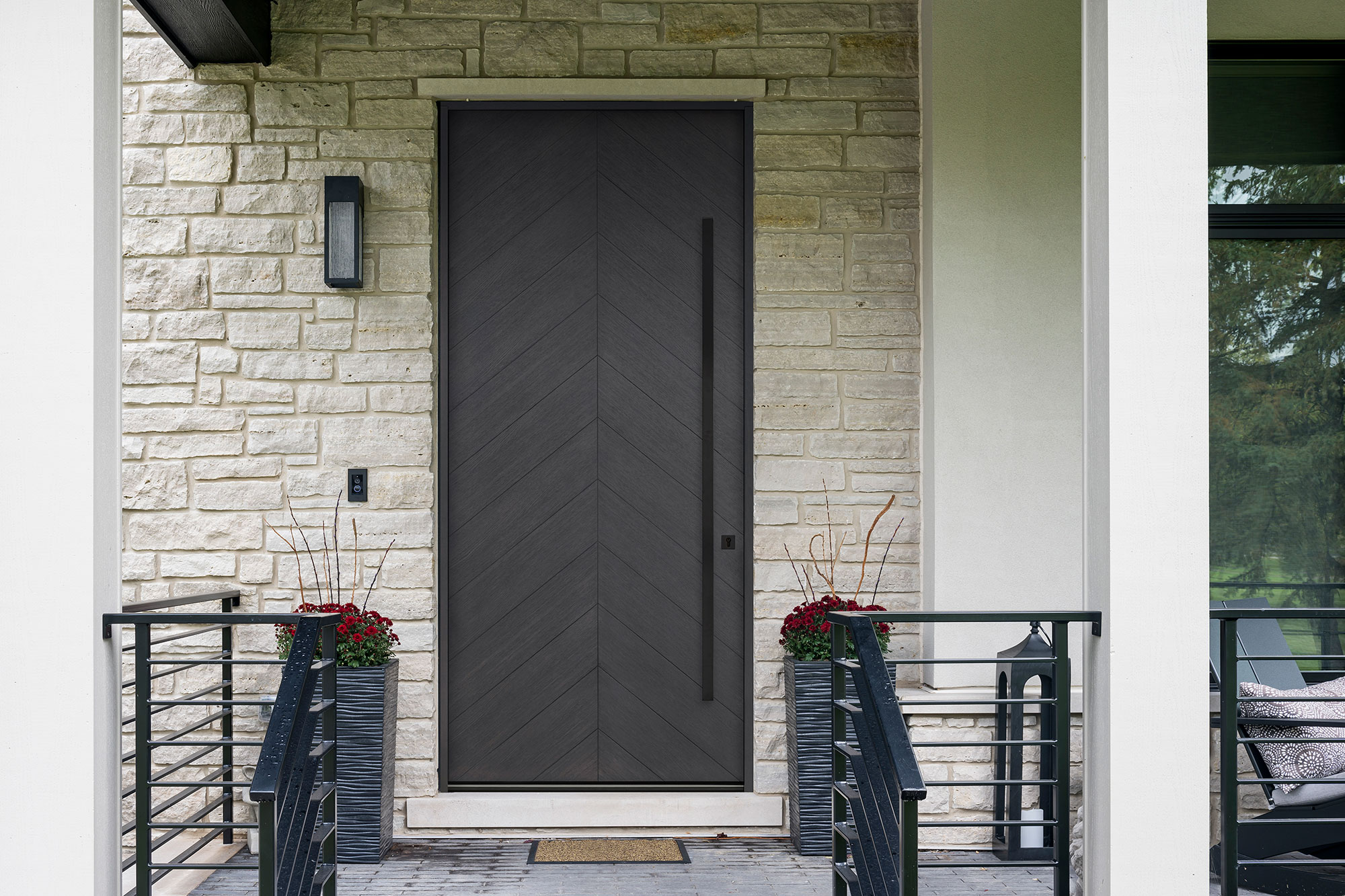
This classic style features raised or flat panels and is typically made from wood. Panel doors offer a timeless and elegant look and are often used for entrance doors. These doors can range from simple to highly decorative, adding character and charm to your entryway.
2. French Doors
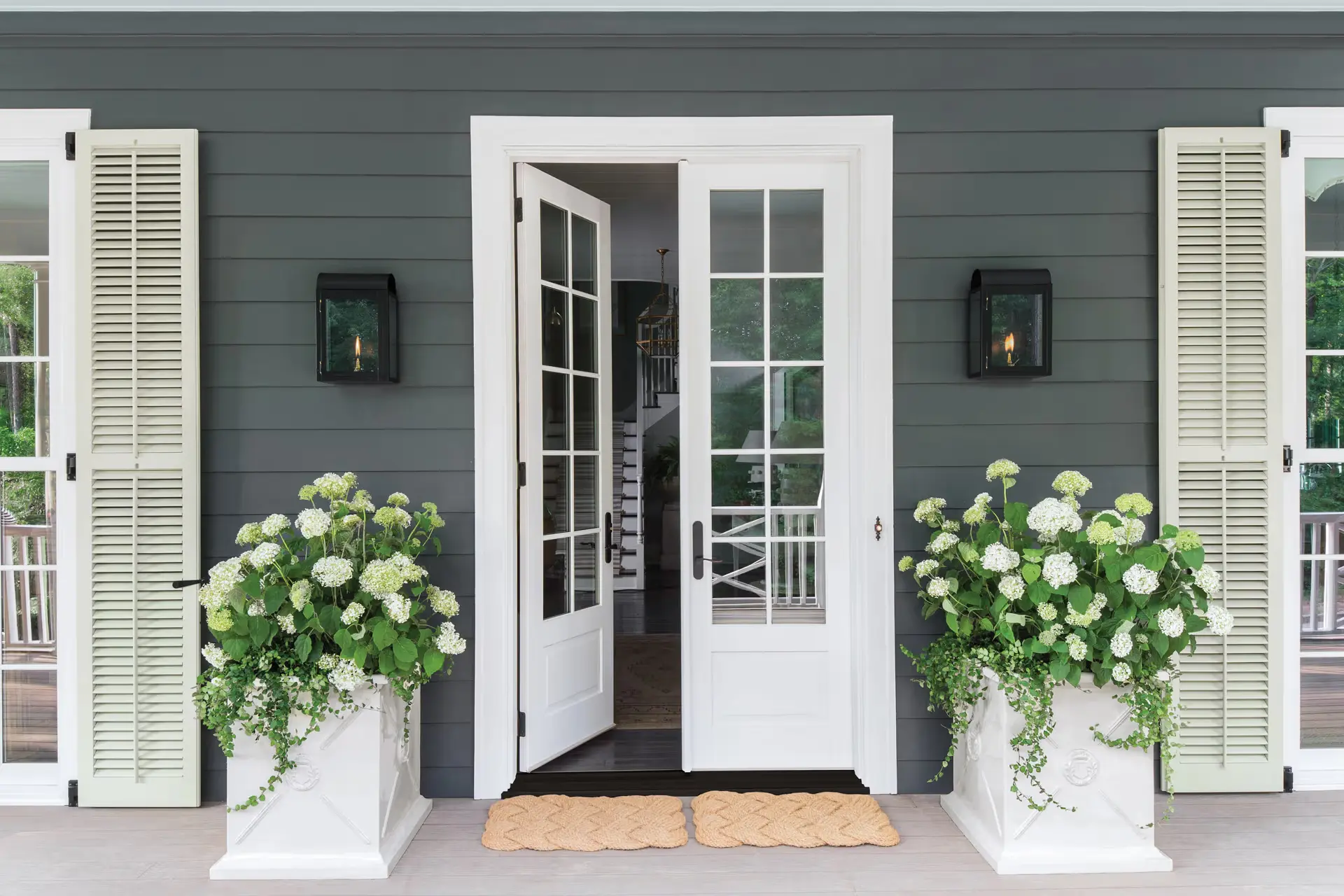
French doors are perfect for creating a grand entrance. With glass panes that extend the full length of the door, these doors let in natural light and create an open, airy feel. They’re often used for front entrances or leading into patios and gardens, offering a stylish and welcoming touch.
3. Sliding Doors:
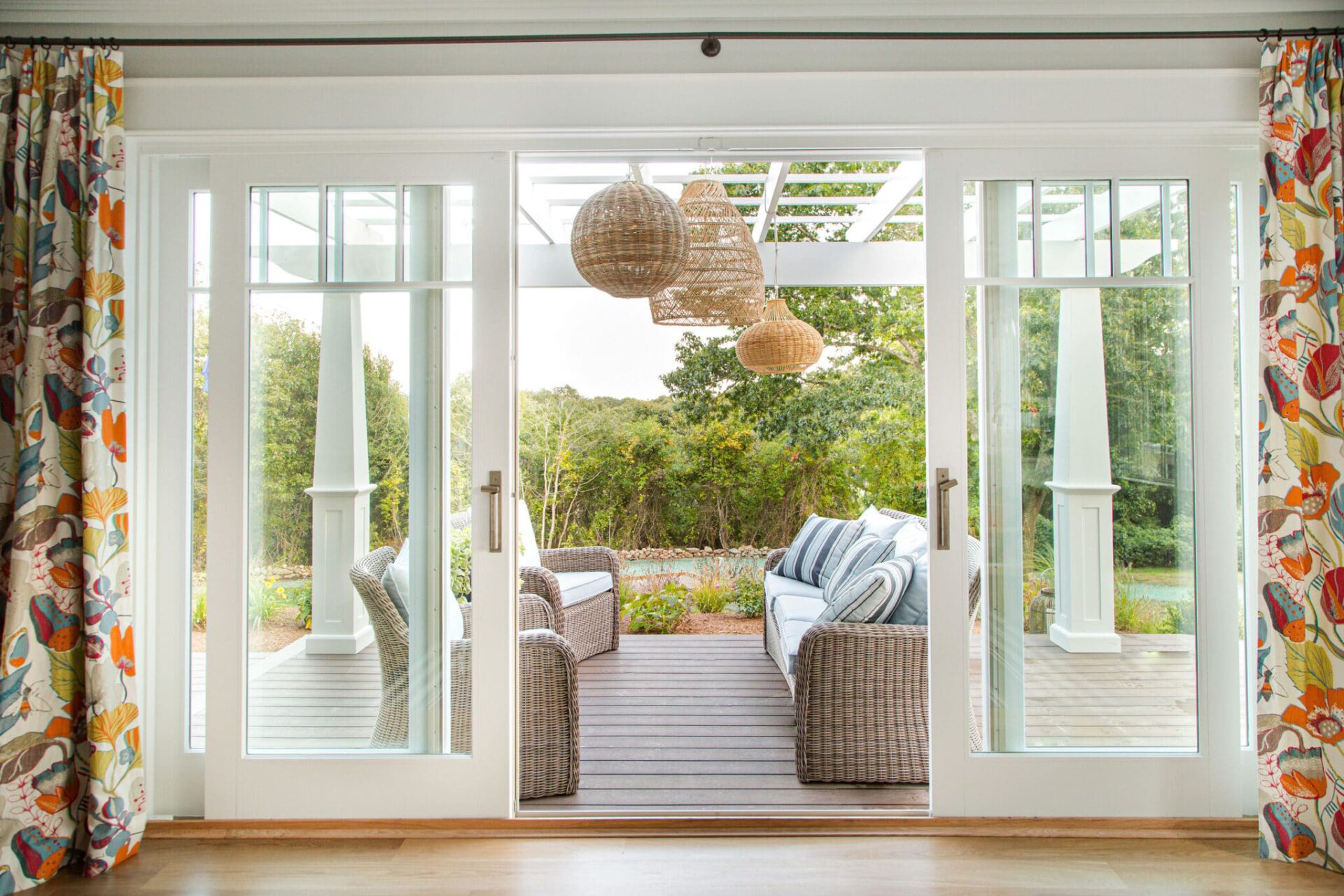
Ideal for spaces where a swing door might not be practical, sliding exterior doors offer both convenience and style. These doors are typically made with large glass panels and are perfect for areas where you want to maximize natural light, such as balconies or terraces.
4. Dutch Doors
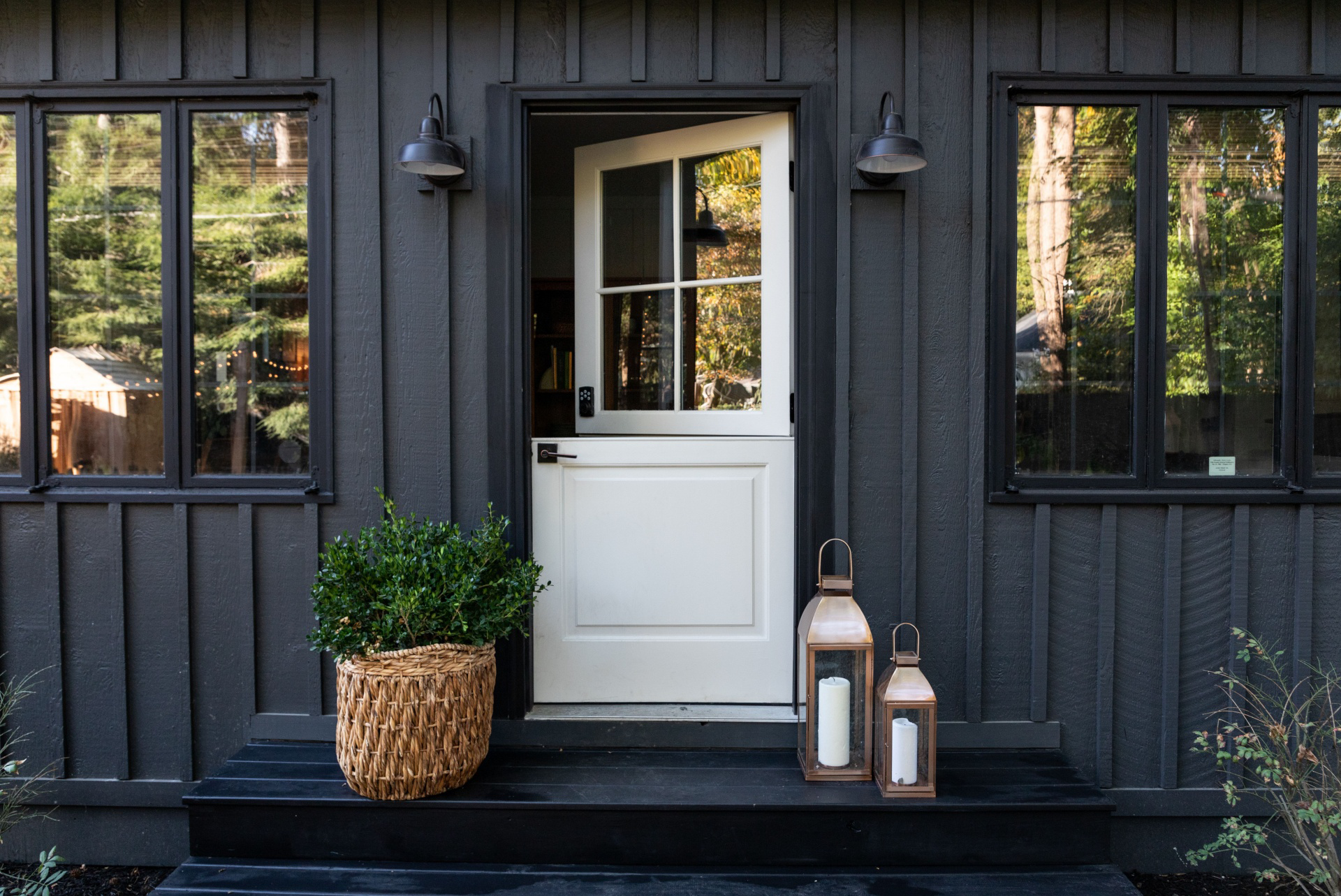
A Dutch door is a divided door that can be opened at the top while the bottom remains closed. This style is both functional and charming, often used in cottages or traditional homes. It allows for fresh air and light while keeping children or pets safely inside.
5. Stainless Steel and Cast Aluminum Doors:

Stainless steel exterior doors or cast aluminum doors are excellent choices for those who prioritize security and durability. These materials offer high resistance to weather, noise, and forced entry, making them ideal for front entrances that require extra protection.
Summary
Each style of exterior door can add a unique touch to your home’s design. Whether you prefer the traditional look of a panel door or the modern appeal of French doors, there’s a style for every taste.
Key Features of an Exterior Door
Choosing the right exterior door isn’t just about style; it’s also about the key features that will enhance your home’s security, energy efficiency, and overall comfort. Here are some essential features to consider:
Custom Entry Door
A custom entry door might be the right option if you’re looking for a door that perfectly fits your home’s needs and style. Custom entry doors allow you to create a designed door for your home. Here are a few reasons to consider going custom:
1. Security Features:
One of the most important aspects of any exterior door is its ability to protect your home. Look for doors with reinforced frames, strong locks, and deadbolts. Many modern entrance doors also come with smart lock systems that allow you to control access remotely, adding an extra layer of security.
2. Insulation:
A well-insulated exterior door helps regulate the temperature inside your home, keeping it warm in the winter and cool in the summer. Look for energy-efficient doors with features like weatherstripping and foam cores that prevent heat from escaping or entering. Fiberglass doors are a popular choice for insulation due to their excellent thermal properties.
3. Durability:
Your exterior door needs to withstand weather conditions such as rain, snow, and wind. Materials like cast aluminum, steel, and solid wood offer durability and long-lasting performance. If you live in an area with harsh weather, it’s especially important to choose a door that will hold up over time.
4. Aesthetic Appeal:
The exterior door is the first thing people notice about your home, so its appearance matters. Whether you choose a sleek, modern design or a more traditional look, the door should complement your home’s overall style. Consider colors, finishes, and additional design elements like glass panels or decorative hardware.
5. Weather Resistance:
In addition to insulation, look for exterior doors that are weather-resistant. This includes waterproofing, rot-resistant materials, and rust-resistant finishes. Whether you opt for a stainless steel door or cast aluminum, the right door will be able to handle the elements without showing wear and tear.
Choosing the Right Exterior Door for Your Home
Selecting the perfect exterior door for your home involves considering several factors, from design to functionality. Here are some tips to help you make the right choice:
1. Consider Your Climate:
If you live in a region with extreme temperatures, choose a door that offers excellent insulation. Fiberglass and cast aluminum doors are fantastic options for energy efficiency. On the other hand, if security is your primary concern, a steel door with added security features will be ideal.
2. Match Your Home’s Style:
The exterior door should reflect your home’s overall design. If you live in a traditional home, a wooden panel door might be the best option. For a modern home, sleek stainless steel doors or French doors might be more appropriate.
3. Think About Functionality:
If your front entrance is often used, a heavy-duty steel door might be your best choice for security and durability. For those who want more natural light, consider glass-paneled doors or French doors. For a more rustic or cottage-style home, a Dutch door adds charm and practicality.
4. Don’t Forget the Details:
Pay attention to small details like door hardware (handles, locks, and hinges), which can affect both the look and function of your exterior door. Choose high-quality, weather-resistant hardware that complements the door’s style and ensures longevity.
Summary
Ultimately, the exterior door you choose should not only look great but also serve its purpose well, whether that’s offering security, insulation, or simply a welcoming entrance. By considering these factors, you can select a door that enhances both the appearance and functionality of your home.

How to Choose Between Exterior and Interior Door?
Choosing between exterior doors and interior doors can seem tricky at first, but understanding their specific functions and features will make the decision much easier. Whether you’re upgrading your home or building from scratch, selecting the correct type of door for each area of your home is essential for both aesthetics and functionality. Below, we’ll break down when to install an exterior door versus when an interior door is the right choice for your space.
When to Install an Exterior Door?
An exterior door is typically installed when you need a way to connect the interior of your home to the outside world. These doors are meant to withstand weather conditions, provide security, and offer insulation to maintain a comfortable indoor temperature. Here are some everyday situations where you’d choose an exterior door:
1. Main Entrance:
The most obvious place for an exterior door is your home’s primary entrance. This door serves as the first point of contact for anyone coming to your home, so it should be both functional and aesthetically pleasing. Whether it’s a traditional panel door, a stylish French door, or a modern cast aluminum door, this door must offer security, energy efficiency, and curb appeal.
2. Back or Side Entrances:
If your home has a back door or side door, these are also exterior doors that need to be strong, secure, and weather-resistant. Common choices for these entrances include steel doors for added security or fiberglass doors for better insulation and weatherproofing.
3. Patio or Garden Access:
When installing a door leading to your patio or garden, a glass exterior door or French doors can help create an open, airy space that brings in natural light. These doors are perfect for connecting indoor and outdoor living spaces, offering easy access to your backyard while maintaining security and insulation.
4. Garage or Utility Room:
Sometimes, exterior doors are needed for spaces like a garage or a utility room. These doors should be strong and durable to handle frequent use and resist weather-related wear and tear.
Summary
When installing an exterior door, always consider factors like security, insulation, and durability when choosing the right door for the specific environment and function.
When to Choose an Interior Door?
Interior doors are typically used to divide different living spaces inside your home. These doors don’t need to be as strong or weather-resistant as exterior doors, but they should still serve a functional purpose. Here’s when to choose an interior door:
1. Room Separation:
Interior doors are perfect for dividing your home into different rooms, like bedrooms, bathrooms, or closets. Whether you’re looking for privacy or sound isolation, an interior door keeps spaces separate and private. Hollow core doors are a popular choice here because they are lightweight and affordable, making them ideal for bedrooms and living rooms.
2. Creating Privacy:
If you need to create privacy within your home, such as between a bathroom and the rest of the house, an interior door is a must. Depending on the level of privacy and style you want, you can choose from a variety of styles, including solid wood or MDF doors.
3. Aesthetic and Design:
Interior doors also play a significant role in a room’s decor. If you want a door that enhances the design of your space, consider glass interior doors or panel doors. These can add character, style, and light to your living areas, all while offering functionality. Glass doors are especially significant in spaces like offices, where you want an open feeling but still need some division.
4. Noise Control:
In places where noise might be an issue, such as between a home office and the rest of the house, choosing a soundproof interior door can help. Solid core doors are often chosen for these purposes as they provide better sound insulation compared to hollow core options.
5. Space Efficiency:
If you’re working with a limited space, sliding interior doors or bi-fold doors are a great choice. These doors don’t require a swinging arc, making them ideal for smaller rooms, closets, or even bathrooms in tight spaces.
Summary
In general, interior doors are more about creating functional divisions between rooms while considering the style and privacy of each space. They are lighter and less durable than exterior doors, and the material and design can vary greatly depending on your preferences and needs.
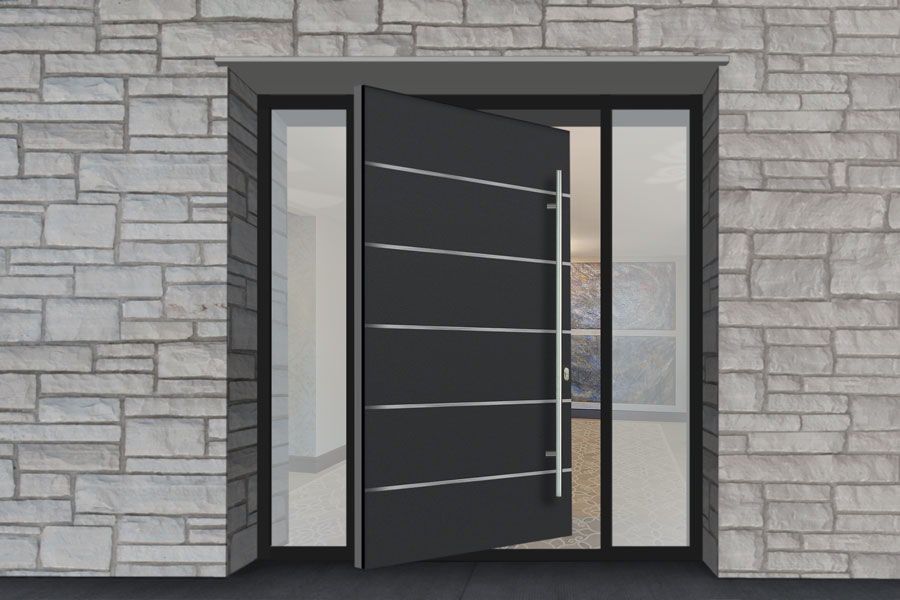
How to Maintain Your Doors?
Maintaining both your exterior doors and interior doors is key to keeping them looking good and working correctly for years. With a bit of care and attention, your doors can stay functional, secure, and beautiful. Whether you’re caring for an exterior door exposed to the weather or an interior door used daily, proper maintenance ensures that it stays in top shape. Below, we’ll cover maintenance tips for both types of doors.
Exterior Door Maintenance Tips
Exterior doors face the most challenging conditions. They deal with the elements, including rain, snow, wind, and extreme temperatures. Regular maintenance is essential to keep your exterior door in great shape. Here are some tips to help protect your entrance door from wear and tear:
1. Clean the Surface Regularly:
Dirt and grime can accumulate on exterior doors, especially on materials like wood or metal. Use a soft cloth and mild soap with warm water to clean your door. For cast aluminum doors or steel doors, be sure to wipe away any debris that might scratch the Surface. Avoid using harsh chemicals, as they can damage the finish.
2. Inspect and Reapply Weatherstripping:
One of the most important features of an exterior door is its ability to keep drafts and moisture out. Weatherstripping seals the gaps around your door, preventing heat loss or rainwater entry. Check the weatherstripping every few months and replace it if it’s cracked or worn out.
3. Treat the Door’s Finish:
If your exterior door is made of wood, the finish can fade over time due to sun exposure and weather. Regularly treating the wood with a high-quality wood preservative or protective finish can help protect it from moisture and UV damage. For steel doors or cast aluminum doors, ensure that any scratches or chips in the finish are touched up promptly to prevent rust and corrosion.
4. Check and Lubricate Hinges and Locks:
Over time, the hinges and locks on exterior doors can get stiff or squeaky. Apply a small amount of lubricant to keep them operating smoothly. This is especially important for entrance doors with heavy-duty locks and deadbolts, as smooth operation helps maintain security.
5. Inspect for Damage:
Periodically inspect your exterior door for signs of damage. Look for cracks, dents, or signs of wear, particularly around the frame or the threshold. If you notice any damage, it’s best to address it right away to avoid further problems, such as water leakage or security risks.
6. Protect Against the Elements:
If your exterior door is exposed to extreme weather, consider adding a protective storm door. A storm door helps shield your primary exterior door from rain and snow while providing an extra layer of security and insulation.
Interior Door Care
Interior doors don’t face the harsh elements like exterior doors, but they still need some attention to keep them looking good and functioning well. Here are a few easy tips for caring for your interior doors:
1. Regular Cleaning:
Clean your interior doors regularly to remove dust and fingerprints. Use a soft cloth with a mild cleaner suitable for the door’s material. For wooden interior doors, be sure to dust them regularly to prevent buildup. If you have glass interior doors, use a glass cleaner to keep them sparkling.
2. Fix Scratches or Dents Quickly:
Interior doors can be prone to scratches and dents from everyday use. For wooden doors, you can easily repair minor scratches with touch-up markers or wood filler. If the damage is more significant, sanding and repainting may be necessary to restore the finish.
3. Lubricate Hinges:
Just like exterior doors, interior doors can develop squeaky or stiff hinges over time. A little lubricant can go a long way in keeping your doors operating smoothly. Be sure to clean the hinges before applying lubricant to avoid trapping dirt.
4. Maintain Door Hardware:
If your interior doors have knobs or handles, make sure they’re securely attached. Tighten any loose screws or bolts to prevent damage to the door. For glass interior doors with metal handles, check for rust or corrosion, especially in bathrooms or kitchens where humidity is higher. If you notice any rust, clean the hardware with a rust remover and apply a protective coating.
5. Monitor for Misalignment:
Over time, interior doors can shift or become misaligned due to changes in humidity or temperature. If your door no longer swings properly or has trouble latching, it might need adjusting. Most of the time, this involves tightening or loosening the hinges or, in more extreme cases, planing the edges of the door.
6. Protect from Humidity:
Although interior doors don’t deal with the elements, humidity can still affect them, especially in areas like bathrooms and kitchens. To prevent damage, use a dehumidifier in damp areas or install an exhaust fan to keep the air dry. It’s important to keep wooden interior doors away from moisture to prevent warping or swelling.
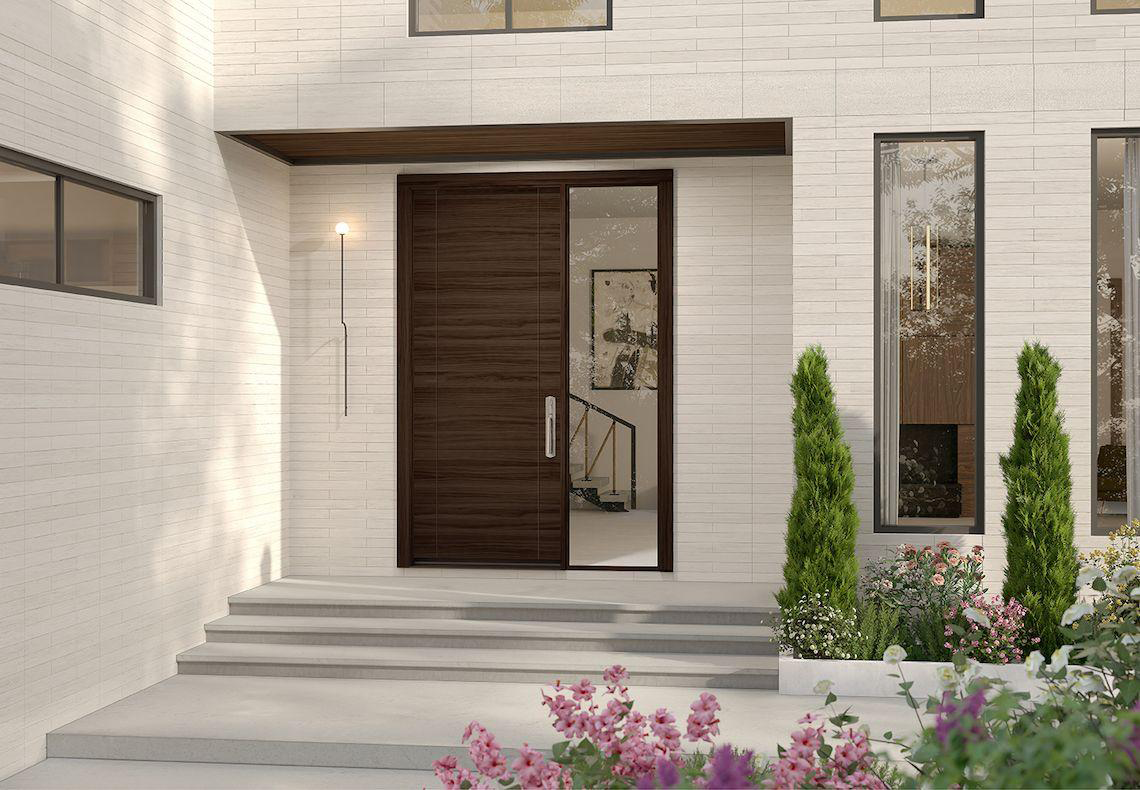
Why Exterior Doors Matter More Than You Think?
Exterior doors play a much bigger role in your home than you might initially think. From enhancing the first impression of your home to protecting it from intruders, exterior doors are key to both the functionality and aesthetics of your space. Let’s dive into why the right exterior door matters more than you might realize.
Boosting Curb Appeal with the Right Exterior Door
The exterior door is often the first thing people notice when they approach your home. It’s a significant part of your home’s curb appeal, which is the attractiveness of your home from the outside. A well-chosen entrance door can elevate the look of your house and make a lasting impression on guests and potential buyers alike.
Choosing the right exterior door can make all the difference. A solid wood door exudes warmth and timeless beauty, while a sleek stainless steel door offers a modern, industrial look. French doors or glass exterior doors can create an inviting and open feel, letting natural light flood into your home and connecting the indoors with your outdoor living space. No matter what your home’s style is, the exterior door you choose should complement its overall design.
If you’re looking to sell your home, investing in a high-quality exterior door can have a significant return on investment. Homes with attractive entrance doors tend to sell faster and at higher prices. It’s a simple, cost-effective way to enhance your home’s value without undertaking a significant renovation project.
The Role of Exterior Doors in Home Security
When it comes to keeping your home safe, exterior doors are your first line of defense. The right exterior door not only adds beauty but also plays a crucial role in protecting your home and family from intruders. The materials, locking mechanisms, and overall strength of your exterior door are all key factors in keeping unwanted visitors out.
Exterior doors, especially entrance doors, should be built to be strong and secure. For ultimate protection, many homeowners choose steel exterior doors or cast aluminum doors. These materials are known for their durability and resistance to forced entry. If you’re looking for both security and style, consider a door with a reinforced frame, a smart lock, or a deadbolt. These security features are designed to make it much harder for burglars to break in.
In addition to security, the exterior door can help deter potential intruders by signaling that your home is well-protected. Doors with sturdy construction and visible security features like strong locks and deadbolts send a clear message that your home is not an easy target. The more secure your exterior door, the less likely you are to experience a break-in.
Your exterior door also impacts your home’s overall safety in other ways. A well-insulated door helps to maintain the temperature inside, keeping your home warm in winter and cool in summer. It also protects against harmful outside elements, such as wind, rain, and snow. Energy-efficient doors can save you money on heating and cooling costs, keeping your home comfortable while reducing your utility bills.
Relate FAQ
What is the difference between an exterior door and an interior door?
The primary difference is that exterior doors are designed to face the outside environment and provide security and weather resistance. In contrast, interior doors are used within a home or building to separate rooms and spaces. Exterior doors often have added features like insulation, weatherstripping, and more robust locks.
How do I choose the right exterior door for my home?
When choosing an exterior door, consider the material (wood, stainless steel, cast aluminum), security features (deadbolts, smart locks), energy efficiency (insulation), and design (style, color). It's essential to match the door with your home’s architectural style and your climate conditions.
Are exterior doors insulated?
Many modern exterior doors are insulated to improve energy efficiency. Insulated doors help keep your home warm in the winter and cool in the summer, reducing heating and cooling costs. Insulation is typically placed between two layers of the door’s surface.
What features should an exterior door have for better security?
Look for exterior doors with features such as solid construction, reinforced frames, multi-point locking systems, and security glazing. Adding a deadbolt or a smart lock can also enhance the security of your home.
How do I maintain my exterior door?
Regular maintenance includes cleaning the door, checking seals and weatherstripping, and ensuring the locks are functioning correctly. Wood doors may require periodic refinishing or painting, while steel or fiberglass doors can be maintained with cleaning and occasional touch-ups.
Can I install an exterior door myself?
While it is possible to install an exterior door yourself, it requires proper tools and skills. A professional installer can ensure that the door is sealed correctly, aligned, and secure, and they can address potential issues with the frame or structural integrity.
What are the best types of exterior doors for cold climates?
For cold climates, insulated doors made from stainless steel or cast aluminum with a solid core are ideal. They provide better protection against the cold and improve energy efficiency. Additionally, look for doors with weatherstripping to keep drafts out.
What is the lifespan of an exterior door?
The lifespan of an exterior door depends on its material and maintenance. Stainless steel and cast aluminum doors can last up to 30 years or more, while wood doors may need replacement or refinishing every 10–15 years.
